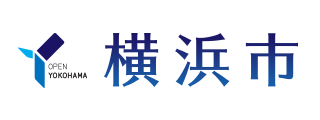- Yokohama-shi Top Page
- Municipal Government Information
- About Yokohama-shi
- About Yokohama Port
- Port and Harbor Bureau Basic Information
- Plans and Policies
- Yokohama Port Port Plan (revised in 2014)
Here's the text.
Yokohama Port Port Plan (revised in 2014)
Last Updated January 10, 2025
-What is the Yokohama Port Harbor Project?
- This is a basic plan established by Yokohama City, the port manager, based on the Port Law, in order to develop, use and preserve Yokohama Port systematically.
- In light of social conditions and changes in the environment surrounding Yokohama Port, we have set the amount of cargo, the scale and arrangement of facilities, etc., with a target year of the latter half of the 2018s.
-Port planning policy -
Yokohama Port is a port with international competitiveness, a port where citizens gather and rest, and a port that is safe, secure and environmentally friendly.
As three pillars, we aim to revitalize the Yokohama economy and create a comprehensive port that enriches citizens' lives.
1. Ports with International Competitiveness
- As an international container strategic port, in order to maintain and expand core routes and further expand near-sea routes, we will appropriately respond to shipping trends such as the size of containerships and the increase in global cargo volume, mainly in Asia, to reorganize and strengthen container wharfs and develop advanced facilities. At the same time, we plan to create a new wharf that integrates a large water depth and high-standard container terminal and a logistics facility with advanced distribution processing functions to form a logistics base in the coastal area.
- We will promote the function change and consolidation of wharf so that we can efficiently handle general cargo other than containers, including completed vehicles, which are the main cargo handled by Yokohama Port.
- In order to respond to increasing port logistics, we will connect wide-area road networks and harbor roads to strengthen cargo collection capacity and ensure smooth traffic between wharfs.
2. Port where citizens gather and relax
- As Japan's leading cruise port, we will respond to the increasing number of cruise ships and the increase in port calls, and create bustle.
- In the inner port area where usage patterns are changing, such as offshore expansion of logistics functions, we will convert land use and promote the creation of new bustling bases.
- In order to provide familiar hydrophilic space to citizens and visitors and meet the demand for marine recreation, we will promote the formation of open waterfronts and create a comfortable and attractive hydrophilic space that takes advantage of the characteristics of the district. .
3. Safe, secure and environmentally friendly ports
- As a base to support citizens' lives and economic activities in the event of a disaster, we will strengthen the disaster prevention function of Yokohama Port and promote the creation of a port that is resistant to disasters.
- In order to pass on the friendly and beautiful Yokohama Port to the next generation, we will promote environmental conservation initiatives such as securing green spaces, improving the water quality environment, and countermeasures against global warming.
-Main contents of port planning -
1. Ports with International Competitiveness
- Public Wharf Project
- Harbor Transport Facility Plan
- Develop measures to realize international container strategic ports
2. Port where citizens gather and relax
- Passenger Ship Wharf Plan
- Redevelopment of Yamashita-Futo
- Creation of bustle in coastal areas
3. Safe, secure and environmentally friendly ports
- Large-scale earthquake countermeasures facilities
- Environmental Conservation
- Smart port
※For details, please refer to the following document.
- Yokohama Port Harbor Plan (PDF: 287KB)
- Yokohama Port Harbor Plan Map (PDF: 9,650KB)
- Overview of Yokohama Port Harbor Plan (PDF: 3,747KB)
※Port plans can be viewed at the Citizens' Information Center (3rd floor of the City Hall) and the Port and Harbor Bureau Policy Coordination Division (28th floor of the City Hall), and are viewed and rented in Chuo-toshokan.
※As for the situation of the deliberation, please see holding results of Yokohama-shi port council.
| Annual | Category | Main contents |
|---|---|---|
| 1956 | Formulation | Yamashita-Futo Plan to expand Izutacho Wharf |
| 1958 | Revision | Landfill in Daikoku-cho, Negishi Bay Sea Surface Landfill |
| 1961 | Revision | Plan for Honmoku Wharf and Mizuho Wharf |
| 1967 | Revision | Daikoku Wharf Project, Kanazawa Landfill |
| 1978 | Revision | Daikoku Futo District Plan |
| 1982 | Revision | Minami Honmoku Wharf Project |
| 1987 | Revision | Change of Minami Honmoku Wharf Plan, Osanbashi Wharf Plan |
| 1997 | Revision | Changes in the Public Wharf Plan |
| 2006 | Revision | Change of public wharf plan, waste disposal plan |
| 2014 | Revision | Changes in the New Honmoku Wharf Plan, Public Wharf Plan, etc. |
You may need a separate PDF reader to open a PDF file.
If you do not have it, you can download it free of charge from Adobe.
![]() To download Adobe Acrobat Reader DC
To download Adobe Acrobat Reader DC
Inquiries to this page
Policy Coordination Division, Policy Coordination Division, Port and Harbor Bureau Policy Coordination Department
Telephone: 045-671-7165
Telephone: 045-671-7165
Fax: 045-671-7310
Email address: kw-seisaku@city.yokohama.lg.jp
Page ID: 459-811-747







